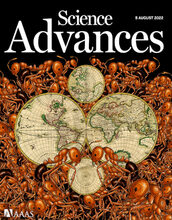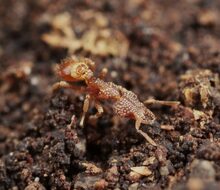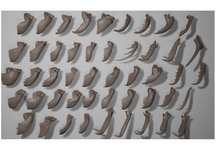Posts
New Paper on Global Ant Diversity
A long-term research goal of our lab is to build a comprehensive database and map of how ants are distributed around the world. We recently published a milestone in this effort, the first high-resolution mapping of richness and rarity. In this study, we compared ant patterns to vertebrates and used machine learning to predict hotspots of undiscovered diversity, which should help guide future research.
Mainland fieldwork tales: of ants, earthquake, and fish cake
Post by Gaurav Agavekar, PhD student: One of the things I like about my PhD work is that I get to do a little bit of everything: fieldwork, molecular lab work, and bioinformatics. This helps keep monotony at bay and supplies a variety of interesting problems to solve. Although I like switching back and forth between these tasks, I probably enjoy fieldwork the most. Unfortunately, due to the pandemic, I haven’t had much of an opportunity to conduct fieldwork outside of Okinawa.
All about mandibles
One of the most striking features of ant diversity is the sheer variety and ingenuity of mandibles. Mandibles are a primary way that ants interact with the world, and are used as diverse tools for many tasks and purposes. Ant mandibles are cutters and carriers, but also trap-jaws, snap-jaws, millipede shavers, seed millers, wood borers, and beyond. There are truly a huge number of mandible shapes and functions to explore from ecological, evolutionary, biomechanical, and developmental perspectives.
[New Paper] Regular is irregular? Seeking for theoretical understanding of the role of complex landscape in driving biodiversity
Our new paper From species sorting to mass effects: spatial network structure mediates the shift between metacommunity archetypes published in Ecography explores the role of landscape structure in driving biodiversity.
New study on some mysterious Pheidole
If you look hard enough in the field, you are guaranteed to uncover cool stuff. Such is the case in Madagascar, where Brian Fisher and colleagues have been surveying the island intensively for 20+ years, uncovering a huge and mostly endemic ant fauna. Georg Fischer has been working for some years on the collections of Malagasy Pheidole, and, in the process found something very strange. There is an extremely rare, and unusual group of social parasites with workers that seem to look like their hosts. Working with Sasha Mikheyev’s lab and other colleagues, we found they
Augment your reality with some new ant species- in 3D.
Ever wanted your taxonomic revision with its own custom-made iphone app?






